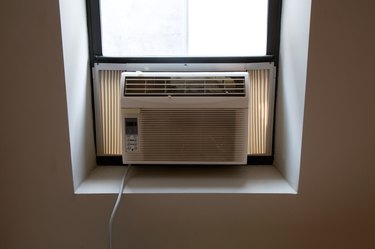
A burnt plug on an air conditioner means that either the plug is malfunctioning or the outlet that it's plugged into has an issue. In either case, the outlet very likely has been damaged by the heat that caused the burn marks on the plug. Change the outlet and then attempt to ascertain whether the air conditioner plug is the issue.
Replace the Outlet
Video of the Day
The plug portion of an electrical wire doesn't have very much that can go wrong. It's a set of metal prongs that make contact with the clips inside the outlet in order to conduct electricity to the device. As such, the first assumption always must be that there's a problem with the outlet. Shut off the main circuit breaker and replace the outlet or have a licensed electrician do it for you.
Video of the Day
Inspect the Plug
If the insulation on the plug, which is the plastic or rubber portion that you hold while you plug in the wire, is damaged or burned, you'll need to replace the plug. A plug with damaged insulation can pose a serious fire risk and can cause electrical shock if touched. Home improvement stores sell plug kits that can be clamped onto the end of the air conditioner's wire after the old plug has been cut off. Ensure that the plug is rated for the amperage of your air conditioner, as indicated by its user manual.
Test the Repairs
Plug your new plug in to your newly installed outlet, and turn on your air conditioner. Carefully monitor the outlet and the plug for any signs of heat or burning. Have a friend wait near the circuit breaker, ready to shut off power to the outlet if you see or smell anything.
Call an Electrician
If the burning plug problem continues with a new outlet and plug, the problem likely lies in your electrical wiring. A crossed wire or short circuit may be responsible, and tracing that sort of issue is not a do-it-yourself project. Electricity is dangerous to work with, and care must be taken. Consult experts, and know your limitations.